- This event has passed.
TYC – CCP9 Visiting Professor Seminar: Mark van Schilfgaarde, NREL
10 September 2025 @ 3:00 pm – 4:00 pm
Response functions of correlated systems within Green’s function theory
We present a detailed examination of one- and two-particle spectral functions in a vari- ety of correlated systems within diagrammatic many-body perturbation theory (MBPT). Diagrammatic Green’s function methods provide a natural path for an ab initio description of many-body phenomena. Diagrams generate both response functions and the effective time-dependent potential, which is generated from response functions. This makes it a natural vehicle to model probes such as inelastic neutron neutron scattering, ARPES, EELS, and RIXS. However, much depends on the fidelity of the theory used to generate the Green’s functions. Finding adequate prescriptions for constructing Green’s functions is particularly daunting when systems are strongly correlated.
In traditional ab initio formulations, the potential is calculated at the lowest order (GW) as a perturbative correction to density functional theory. However, uncontrolled approximations in the reference propagate to MBPT, which obscures and also limits the range of validity. We present an approach developed within the Questaal community code, which starts at its lowest level the quasiparticle self-consistent GW (QSGW ) approxima- tion. Self-consistency can sometimes be essential, as we show for TiSe2 and the 1D cuprate SrCuO2. Through self-consistency discrepancies with experiment become highly system- atic, allowing us to identify which missing diagrams are the most important. This enables the theory to be refined in a systematic manner. We will show how addition of electron- hole diagrams dramatically improves its fidelity. The need for other diagrams become apparent when spin fluctuations become important. These we include by augmenting QSGW with dynamical mean field theory.
QSGW is particularly effecting at characterizing spectral functions in magnetic van der Waals insulators. We present a detailed analysis of one- and two-body spectral functions in CrSBr, a new 2D magnetic system that shows much promise for superseding the well- known transition metal dichalcogenides, as a medium for integrated circuitry in quantum photonics, optoelectronics, and spintronics. Experimental observations of one-body and excitonic spectra, their dependence on temperature, magnetic field, and layer thickness can be explained in detail. These excitons are intermediate between the Frenkel and Wannier limits. We show the connection between MBPT and ligand field theory traditionally used to describe them, and the range of validity and limits to each.

